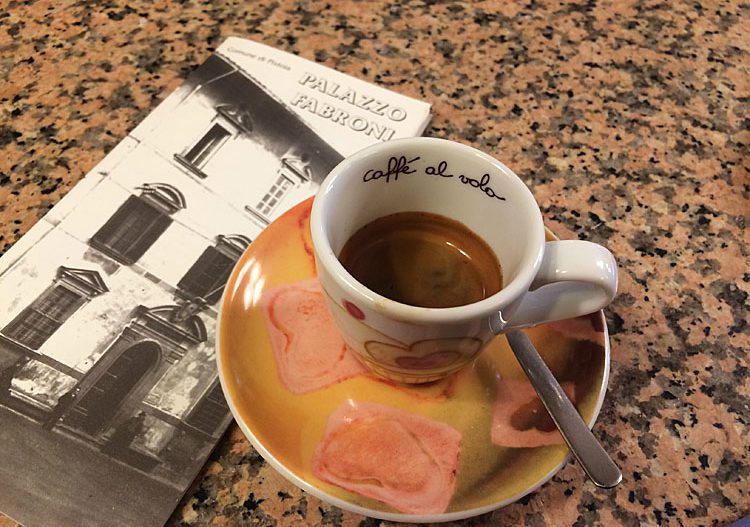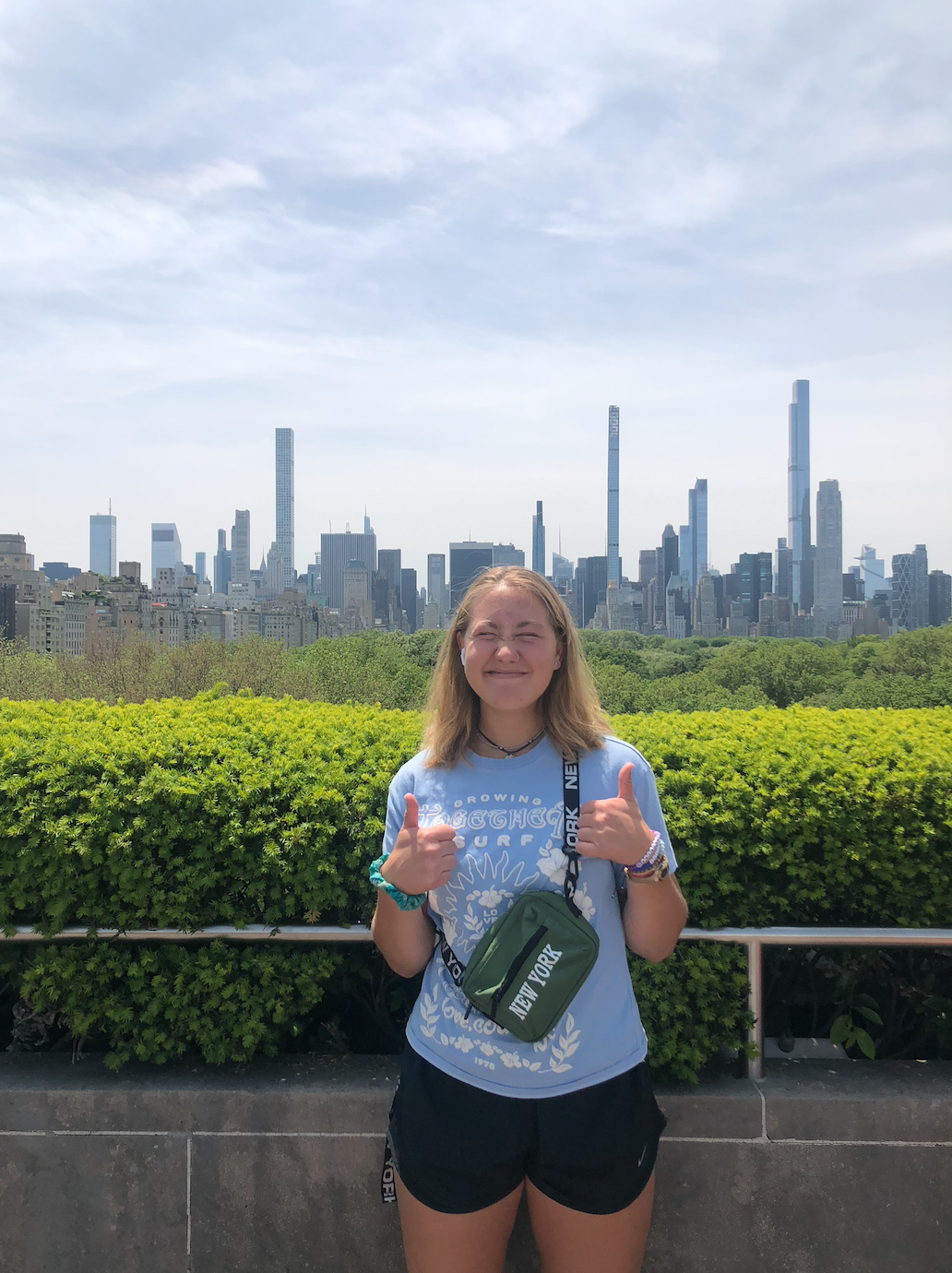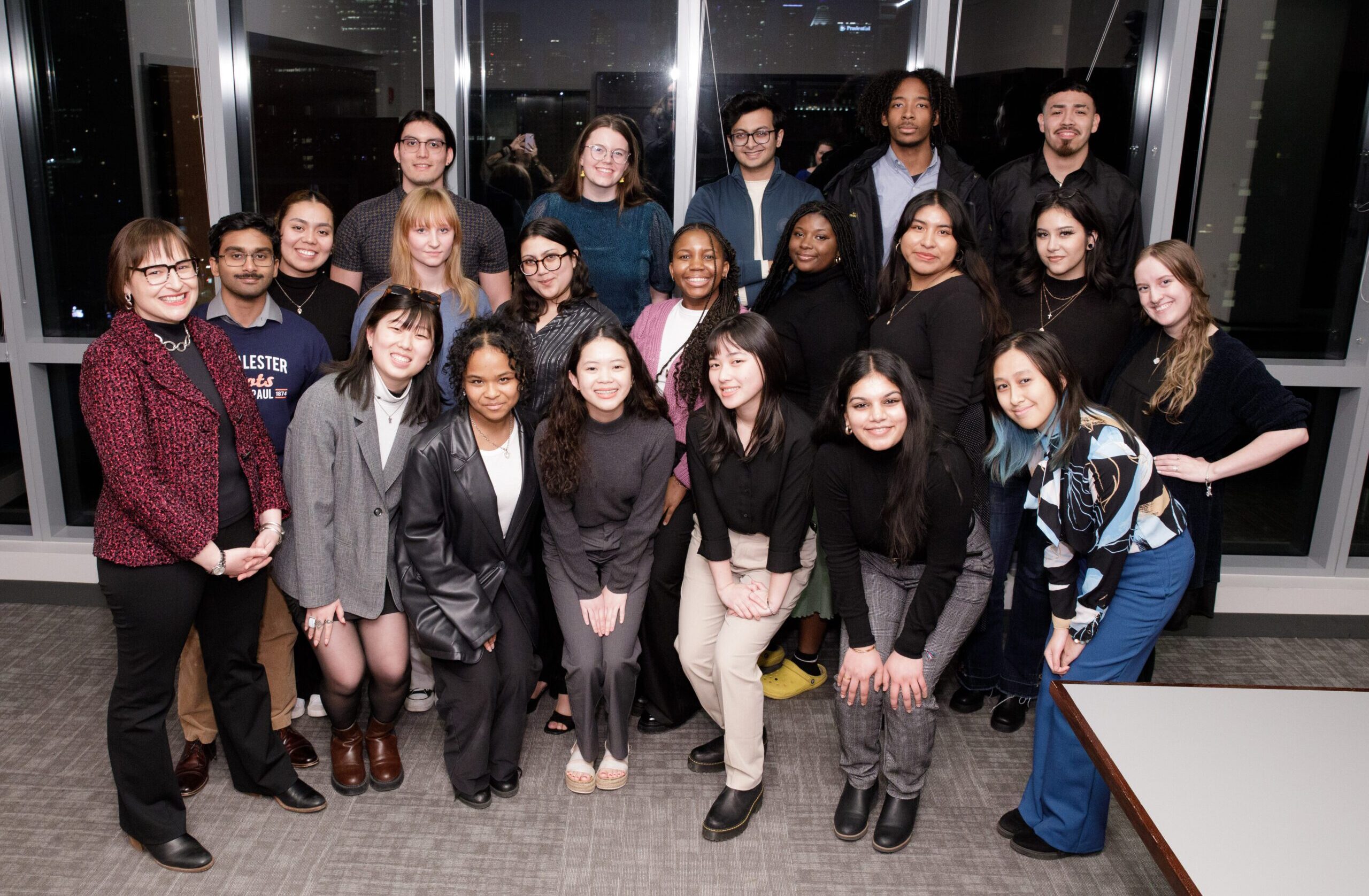Five Days in Florence |
| Daily posts and photos from ACM faculty and consortial staff during the site visit to the ACM Florence program. |
| < Day 2 … Day 4 > |
Day 3: Thursday, April 14, 2016
Posted by Ben Zeller, Assistant Professor of Religion, Lake Forest College
Our day began, as one might expect, with breakfast. I would be speaking to our students about food studies in the afternoon, so I took particular note of our meals today. Italian hotel breakfasts are within the pattern of what one could call “continental”: fruit, toast, pastries, yogurt. And cake. Lots of cake. Being in Italy, I did as the Italians did, and ate cake for breakfast.
We set off by bus for the town of Pistoia, an ancient settlement dating back before Roman imperial days, but one that fell within Florentine influence by the Renaissance. Our destination was Palazzo Fabroni, a lovely palace that has been converted into a contemporary art museum. The curator opened the museum just for us, and in addition to seeing its permanent collection we also were able to look at various plans and models for a renovation of the palace’s gardens.
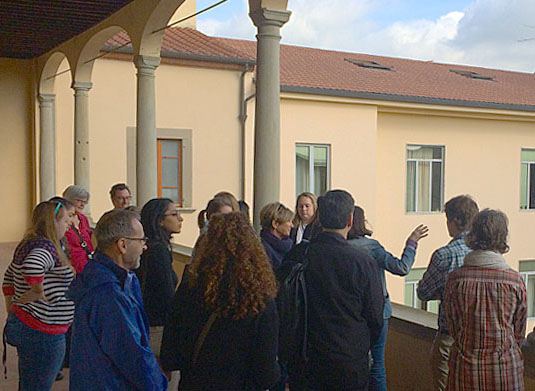 Touring the Palazzo Fabroni
Touring the Palazzo Fabroni
At the palazzo, art historian Jo Ortel of Beloit College spoke about the development of modern art in Italy. Surrounded by many fine examples, she encouraged us to think about how contemporary Italian artists situate their work given the rich artistic legacy of Italy.
She led us to think about how the local context influenced Italian artists particularly in the 1960s. Responding to both the rich Italian Renaissance heritage as well as Cold War cultural pressures, Italian contemporary artists sought to create models of art that moved beyond figurative and representative.
After Jo’s talk, we made a brief stop at the Church of Sant’ Andrea to see its famous Giovanni Pisano-designed pulpit. After a coffee (espresso) break, we headed for the bus and our next visit, to the Medici Villa Poggio a Caiano. This villa, begun in the 15th century and finished in the 16th, was a country home of the Medici family. ACM Florence Director Jodie Mariotti led us on a tour of the site, explaining its artistic, historic, and architectural heritage. After this we ate again, this time at a restaurant specializing in pastries. Yum!
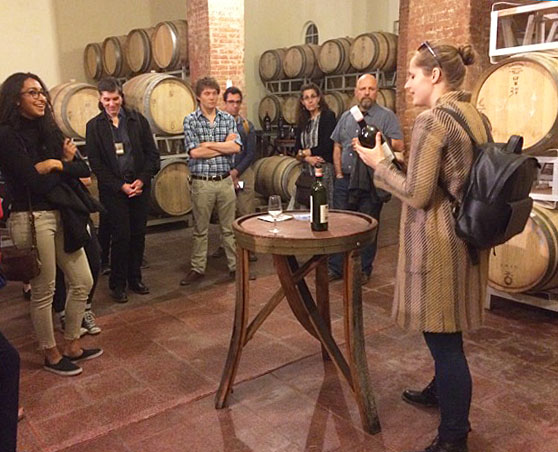 |
|
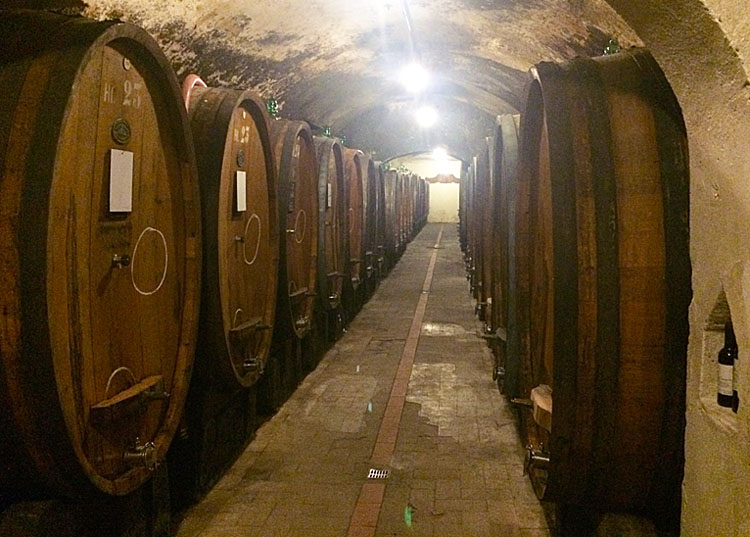 |
|
| Touring the the Tenuta Di Capezzana winery and a view of its cellars. |
Finally, we made our way to the Tenuta Di Capezzana winery in the Carmignano region. This wine producing region has ancient roots, with the Etruscans believed to have produced wine in the same valley. More “recently,” a 9th century document indicates that the region had been producing wine since at least the time of Jesus.
The Carmignano region was supported by the Medici, and the Capazzana estate itself dates to the 15th century. Today the winery produces over half of the wine in its region, in addition to a highly valued olive oil. We toured the winery’s cellars and oil press, as well as sampled some of its products.
We finished the day in the winery’s tasting room with my talk, in which I provided students with some models and ideas about how to think about food in a critical, academic manner. I introduced them to the idea of “foodways” (the collective food practices of a culture), the “cycle of food” (production, preparation, and consumption), and some major themes in the study of food.
Students very actively discussed how they could contextualize their cross-cultural experiences of encountering Florentine foodways, and we left the winery sated in both palette and mind.
Photos courtesy of Ben Zeller and Christopher Welna (winery tour).
Five Days in Florence
- Day 1: Here we are in Florence! by Christopher Welna, ACM
- Day 2: Only 463 steps to the top of the Duomo (but who’s counting?) by Susan Wolverton, Coe College
- Day 3: When in Italy, eat cake for breakfast by Ben Zeller, Lake Forest College
- Day 4: A parade of high fashion by Tom Halverson, Macalester College
- Day 5: Sharing experiences across vast expanses of time and space by Jo Ortel, Beloit College






